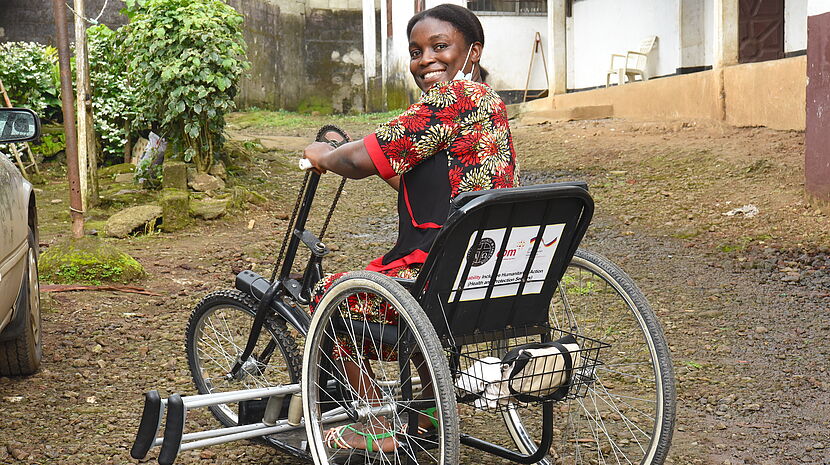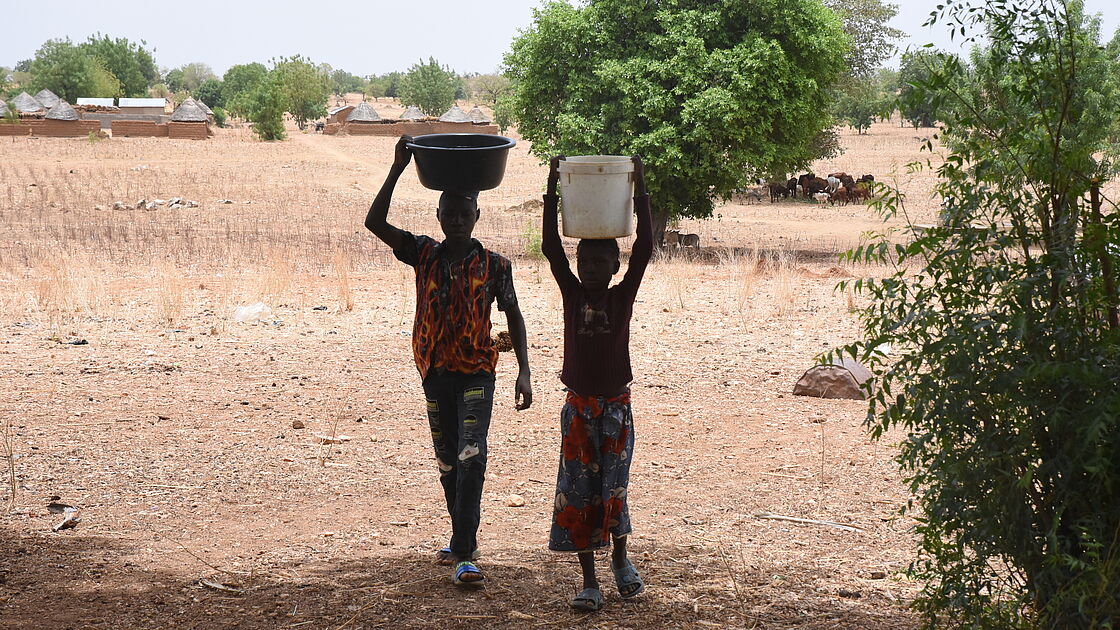Inclusive Preparedness:
Strengthening Early Warning Systems in Cameroon and Niger

Marcelline is a participant in the Inclusive Emergency Response Project of Presbyterian Community Rehabilitation Services, a CBM partner in Cameroon.
©CBM
CBM's new study aims to improve early warning systems in Cameroon and Niger, focusing on the inclusion of persons with disabilities.
In the midst of recurring floods and droughts affecting Cameroon and Niger, CBM is filling a critical gap in disaster preparedness to include all people, especially persons with disabilities. With a new study, we are ensuring that early warning systems not only sound the alarm— but also reach all people.
CBM has initiated a participatory needs assessment to improve early warning systems (EWS) in Cameroon and Niger. The study aims to make these systems more inclusive and ensure that the needs of vulnerable groups are considered in disaster preparedness.
The study focuses on the far north and southwest regions of Cameroon as well as the Diffa and Tillaberi regions of Niger. These areas are prone to natural disasters, including severe rainfall-induced floods and recurrent droughts.
The Goal
The primary goal of this study is to facilitate the design of multi-hazard EWS that actively engages persons with disabilities and communities at risk of droughts and floods. While existing EWS are functional in both countries, they lack the critical element of disability inclusion.
The Importance of an Inclusive Approach

Olivier and his cousin Anaguidi fetch water for their household in drought-stricken northern Cameroon.
©CBM
The study, based on interviews with key disaster risk management stakeholders and disability-focused organisations, found that existing early warning systems in Cameroon and Niger often overlook the needs of persons with disabilities. As a result, these systems are not able to address the specific needs of persons with disabilities.
The study highlights the need for more accessible communication channels to disseminate warnings. Current methods, such as social media, newspapers, and television, can be adapted to better serve persons with disabilities. The study makes several recommendations, including involving persons with disabilities in the design and implementation of early warning systems, providing warnings in accessible formats such as sign language and Braille, conducting awareness campaigns for all vulnerable groups, and improving coordination between government agencies, non-governmental organisations and community organisations for a more effective response.